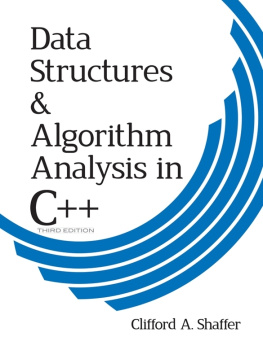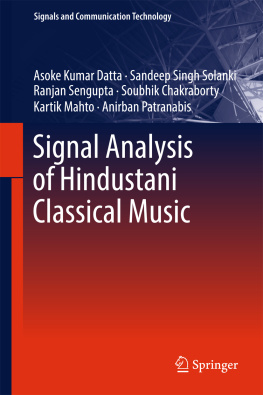Comprehensive Musical
Analysis
John D. White

SCARECROW PRESS, INC.
Published in the United States of America
by Scarecrow Press, Inc.
A Member of the Rowman & Littlefield Publishing Group
4720 Boston Way, Lanham, Maryland 20706
www.scarecrowpress.com
12 Hids Copse Road
Cumnor Hill, Oxford OX2 9JJ, England
Copyright 1994 by John D. White
First paperback edition 2003
All rights reserved. No part of this publication may be reproduced, stored in a retrieval system, or transmitted in any form or by any means, electronic, mechanical, photocopying, recording, or otherwise, without the prior permission of the publisher.
British Library Cataloguing in Publication Information Available
The hardback edition of this book was previously cataloged by the Library of Congress as follows:
White, John David, 1931
Comprehensive Musical Analysis / by John D. White.
p. cm.
Includes index.
ISBN: 978-0-8108-4560-2
1. Musical analysis.
MT6.W4147C65 1993
781.2dc20
93-28520
 The paper used in this publication meets the minimum requirements of American National Standard for Information SciencesPermanence of Paper for Printed Library Materials, ANSI/NISO Z39.48-1992.
The paper used in this publication meets the minimum requirements of American National Standard for Information SciencesPermanence of Paper for Printed Library Materials, ANSI/NISO Z39.48-1992.
Manufactured in the United States of America.
CONTENTS
, by Gerald Warfield
FOREWORD
JOHN WHITES APPROACH TO MUSIC ANALYSIS IS COMprehensive and non-dogmatic, two features which distinguish his book from much music theoretical writing. He leaves no thread of the aural fabric unexamined, and no style or approach to composition is ignored. For tonal music we are shown traditional cadence sequences and traditional forms; then for a different view, we move from the musical foreground back to the Urlinie. For atonal and serial music we are introduced to unordered combinatorial hexachords and twelve-tone sets.
White recognizes that while pitches convey more information than other elements of a musical composition, a pitch analysis is not a complete analysis. He insists that the reader penetrate beyond the realm of pitch into the shadow-world of rhythm and timbre where analysts seldom tread, but where performers make decisions with every nuance and every phrase, and where listeners comprehend even though they cannot articulate what they understand.
Simple steps are given to guide the student, yet White does not shy away from judgment calls, and in his comments and asides often addresses the musical professional.
At the heart of Comprehensive Musical Analysis is the bringing together of those techniques appropriate to the examination of pitch, rhythm, and timbre depending upon whether the composition is tonal or non-tonal, electronic or vocal, indeterminate or highly ordered. In the combining of these techniques, we begin to glimpse a powerful tool for music analysis which does not exist in any single school of theory or musicology, but which draws upon any and all methodologies as required by the analyst.
The opinions in this book are strong. Indeed, there is material which may disturb the dogmatic; yet the authors intentions are clear. White invites you to take your cue for analysis from the compositions themselves rather than from dogma. Ultimately, he invites you to listen to the music.
Gerald Warfield
New York City
PREFACE
THE ANALYSIS OF MUSIC IS AN ESSENTIAL SKILL FOR every musician and musical scholar, and this volume is intended as a guide for learning that skill. It has evolved from my earlier book, The Analysis of Music, which was first published by Prentice-Hall in 1975 and was brought out in a second edition a decade later by Scarecrow Press. Since 1970, when I first undertook writing on this subject, the discipline of music theory has undergone significant changes, both in substance and emphasis. Today it is generally understood that to be a music theorist is to be well versed in the various methodologies of musical analysis, to be competent in compositional processes, and to possess a thorough knowledge of the history of theory and of music literature. Theorists, of course, teach music theory, as do composers and performers, but when theorists publish, their primary areas of scholarship are analysis, compositional processes, and the history of theory.
These areas, of course, are also in the domain of musicology; and the difference between todays theorists and musicologists is primarily one of emphasis. The theorist, though interested in music history, tends to view it as a history of musical structure; the musicologist, though adept with analytical tools, tends to use those tools to study the history of musical style. Musicologists are likely to be drawn into areas such as biography and performance practices, while theorists, in addition to analysis, will find peripheral interests in areas such as history of theory and compositional process. The areas of musicology and theory are becoming increasingly conversant with each other, and I have attempted in this book to recognize that fact.
Thus, the analytical approaches outlined here should be of equal interest to musicologists and theorists. Schenkerian analysis is a good example of this. It is as useful to the musicologist as to the theorist in displaying synoptic views of contrapuntal-harmonic structures; and since musicologists are increasingly concerned with musical style, it behooves them to use linear reductive graphs. Indeed, the display itselfthe concept of linear reductive graphsis one of Schenkers major contributions to musical scholarship. He was also the first to attempt to formulate a comprehensive theory of tonal structuretheory, that is, in the modern scientific sense. But it should be remembered that few theorists consistently follow Schenkers approaches, probably because of the difficulty of finding real consistency in his precepts. Although there is a commonality in the Schenkerian derivation of reductive graphs, theorists differ radically in their actual usage of it. This is why I have chosen to speak of it as reductive linear analysis rather than Schenkerian analysis.
The recent availability of Schenkers writings in good English translations (particularly Free Composition, translated by Ernst Oster and published by Longman in 1979 under the general editorship of Gerald Warfield) has made it possible for English-speaking scholars to acquire an understanding of a subject which in the past was not readily accessible to the music theory community. Because his writings are now widely understood, Schenker is no longer regarded as dogmatically as in the past, and his significant contribution to music theory can now be viewed in a more balanced perspective.
The same is true of set-theoretical analysis. Its principles were first outlined in Howard Hansons Harmonic Materials of Modern Music, published by Appleton-Century in 1960, and he shared this analytical and compositional approach with his composition students of the late 50s, of whom I was one. But it was not until the 70s (primarily due to certain publications of Allen Forte) that music theorists began to find general use for set-theoretical approaches. Since then, there has been an eruption of journal articles and papers on this topic, and it is now a widely used tool for analysis of non-triadic music.
It is these two areas, set theory and reductive linear analysis, which are the principal fields of expansion in this book. The concept of the integration of all of the musical elements remains as valid today as it did when I first undertook writing on this topic twenty years ago. That focus remains, and it has influenced all aspects of the book.


















 The paper used in this publication meets the minimum requirements of American National Standard for Information SciencesPermanence of Paper for Printed Library Materials, ANSI/NISO Z39.48-1992.
The paper used in this publication meets the minimum requirements of American National Standard for Information SciencesPermanence of Paper for Printed Library Materials, ANSI/NISO Z39.48-1992.